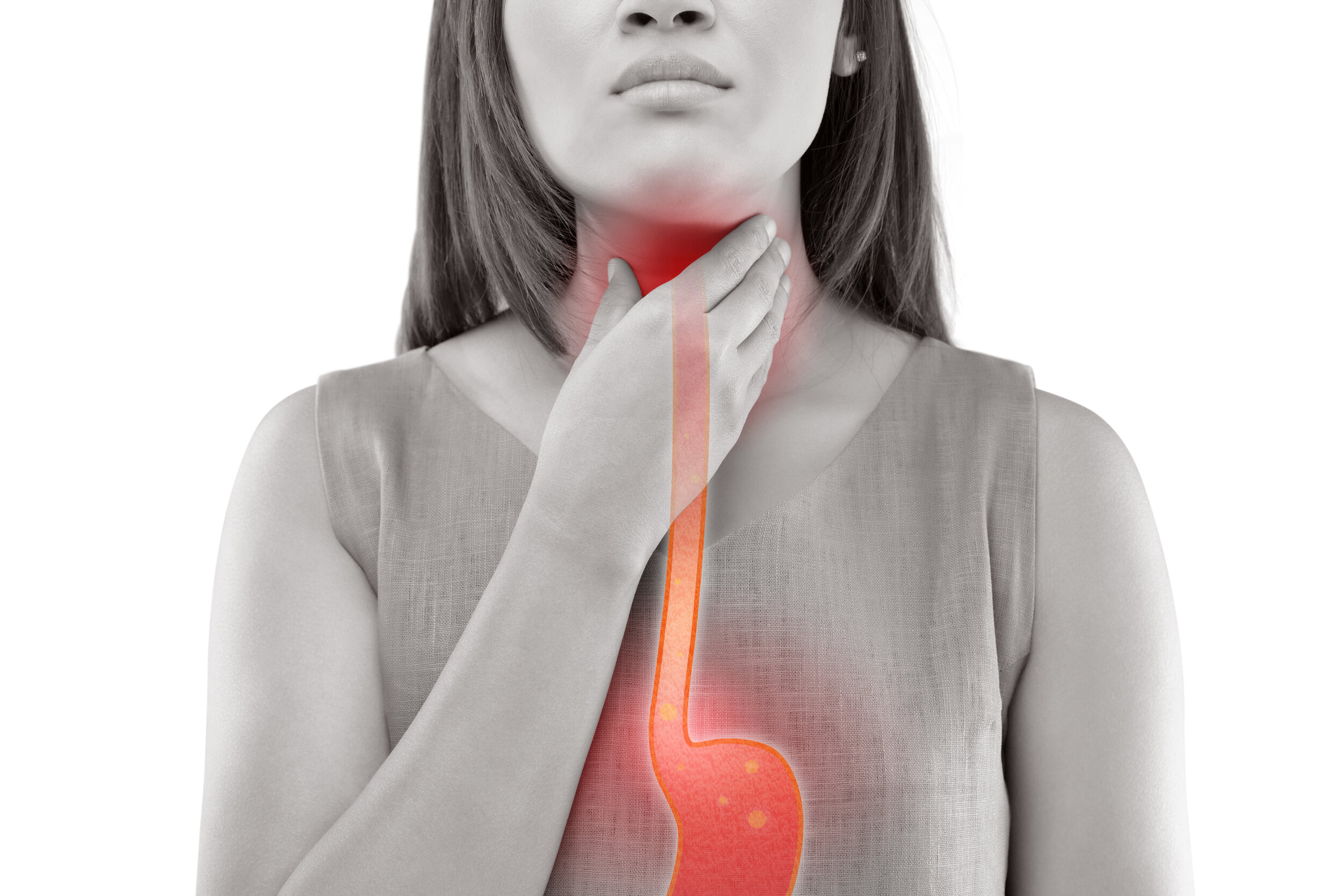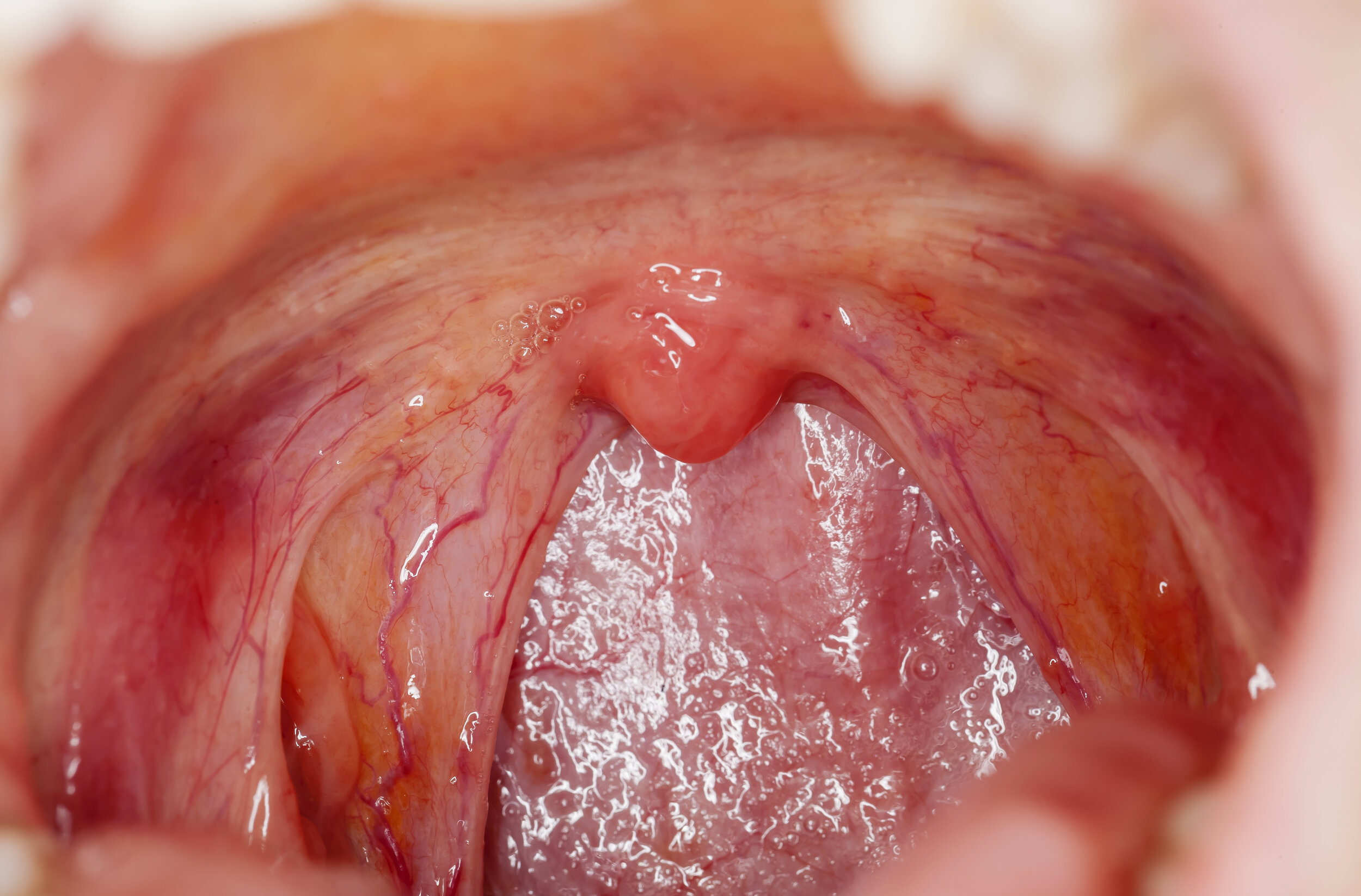Conditions: Swallowing
Normal swallowing is something we do not appreciate until we have lost it. See below for conditions affecting swallowing and ways to evaluate it.
swallowing problems: aging, Aspiration, narrowing, etc.
Swallowing is a natural and mostly subconscious task that we have performed since before birth. The mechanism of swallowing is, however, complex and dependent on a series of reflexive actions happening with proper timing. In addition to its essential role in nutrition, swallowing safely means keeping food and liquid out of the lungs, despite the anatomic predisposition for aspiration and pneumonia. It is normal for swallowing function to deteriorate with age, and this condition, called “presbyesophagus” may significantly affect one’s ability to swallow. A narrowing of the throat or esophagus, from trauma, scar tissue, or compression from outside the esophagus may also affect swallowing and is usually notable for greater difficulty with solids than liquids.
• Animated video explaining swallowing and common swallowing problems
Normal swallowing
Swallowing is more complex than it might seem, involving several structures along the pathway to the stomach, all working with critical synchrony based on sensing the location of food, relaying the message to the brain, and the brain sending instructions back to the muscles in proper time.
Swallowing is a complex physiological process that involves multiple anatomical structures and coordinated muscle movements. It is generally divided into three main phases: oral, pharyngeal, and esophageal.
Anatomy Involved in Swallowing
Oral Cavity: This includes the tongue, teeth, and gums. The tongue plays a crucial role in manipulating food and forming the bolus, which is the mass of food ready to be swallowed.
Pharynx: The pharynx is divided into three parts: the nasopharynx, oropharynx, and laryngopharynx. After food is chewed and mixed with saliva, the tongue propels the bolus into the oropharynx.
Larynx: The larynx contains the vocal cords and serves both airway and swallowing functions. During swallowing, it elevates and the epiglottis folds down to cover the trachea, preventing food from entering the airway.
Esophagus: This muscular tube connects the pharynx to the stomach. It consists of two main muscle layers: the inner circular muscles and the outer longitudinal muscles, which help propel food downward through peristalsis.
Lower Esophageal Sphincter (LES): The LES is a ring of muscle at the junction of the esophagus and stomach that opens to allow food to enter the stomach and closes to prevent reflux.
Phases of Swallowing
Oral Phase: This phase is voluntary and begins with the ingestion of food. The teeth chew the food, mixing it with saliva to form a cohesive bolus. The tongue then pushes the bolus toward the back of the mouth, initiating the swallowing reflex.
Pharyngeal Phase: This phase is involuntary. As the bolus reaches the oropharynx, sensory receptors trigger the swallowing reflex. The soft palate elevates to block the nasopharynx, and the larynx rises to seal off the airway. The bolus then travels through the pharynx, guided by pharyngeal muscles that contract in sequence.
Esophageal Phase: This phase is also involuntary. Once the bolus enters the esophagus, peristalsis begins. This coordinated contraction and relaxation of the esophageal muscles moves the bolus down toward the stomach, while the LES relaxes to allow entry into the stomach.
Swallowing is a highly coordinated process that integrates neural signals from the brain and requires the proper function of various anatomical structures. Dysfunctions in any phase can lead to swallowing difficulties, also known as dysphagia.
Ways to evaluate swallowing
Because of the many components involved in a normal swallow, there are many different causes of swallowing problems. Evaluating a complaint of difficulty swallowing therefore depends on how the issue is described and choosing the most effective, safest, simplest way to diagnose the problem. Progressing up from simple to involved, swallowing evaluation starts with history, physical exam, and then possibly looking with a scope. X-rays taken during the swallow process may be performed to look at the real-time process of swallowing as well as the anatomy of the pathway to the stomach with a modified barium swallow study and/or a barium swallow study.
Some causes of swallowing difficulty:
Zenker’s (hypopharyngeal) diverticulum
A Zenker’s diverticulum is a dead end pocket where the throat becomes the esophagus. This pocket does not allow food to pass. Small Zenker’s diverticuli may amount to no more than a nuisance, but larger ones can cause a gurgling sound, bad breath, malnutrition, and pneumonia. Diagnosis is usually made with a x-rays taken during swallowing, called a barium swallow study or barium esophogram.§
narrowing of the throat or esophagus
Narrowing of the throat or esophagus can result from various causes. For example, when scar tissue forms circumferentially around the passageway and contracts. Scar tissue may arise from prior treatments (like radiation or surgery), trauma, or long-standing reflux from the stomach. A narrowing may be suspected when swallowing solid food (like meat) is more difficult than drinking liquids or eating thin or runny foods. A swallowing x-ray or visual evaluation using an endoscope helps make the diagnosis. Other causes of narrowing include compression from something outside the passageway, such as a tumor or large blood vessel.
swallowing and radiation (or chemo-radiation)
Radiation (alone or combined with chemotherapy) is an essential tool for treating and curing many cancers, but during and well after use in the throat, swallowing function deteriorates. Preserving as much swallowing function as possible is critically important, and doing so requires a combination of education from your treatment team (especially a Speech and Language Pathologist) and diligent effort on your part.
reflux (laryngopharyngeal reflux and gastroesophageal reflux)
Stomach juices are a caustic mix of acid and enzymes that break down food (such as a steak) in preparation for digestion. The stomach lining has a way of protecting itself from this mixture. When these stomach juices make their way up the esophagus (gastroesophageal reflux) or up to the voice box and throat (laryngopharyngeal reflux), this harsh solution treats the surrounding tissue just like it would a steak: it begins to break it down since there is no specialized protection against stomach contents in the tissues above the stomach. Good studies have proven that stomach contents continue all the way up to the nose, sinuses, and even up the Eustachian tubes to get to the ears! All this causes inflammation and irritation. Many people think of reflux as being the same as heartburn, but a burning sensation mid-chest is only one of several ways reflux can cause annoyance. Throat clearing, a gravely voice, a feeling of post-nasal drip, ear fluid or ear pressure problems, and sinus infections are all common consequences of reflux. Because reflux is so common, diagnosis is often made by doing a short experiment: presume that reflux exists, treat it with medicine and a good dietary regimen, and see if symptoms improve. When needed, however, there are more objective ways to test for reflux, such as a having thin wire with sensors put in the throat and esophagus for 24 hours. Reflux might also be visually seen during on a video x-ray study (barium swallow), and if it is seen, the patient has reflux; if it is not seen during that study, reflux may be happening even if not at that particular time.
soft palate dysfunction (velopalatal insufficiency and velopalatal stenosis)
The soft palate works as a valve with two main positions: open and closed. When open, we can breathe through our noses and make speech sounds requiring nasal airflow (such as the /m/ sound). When closed, the throat and the nose no longer connect, so swallowed food goes down the throat instead of up into the nose, and speech sounds emirate only through the mouth (like the /p'/ sound). Velopalatal insufficiency is when the soft palate cannot close fully, and velopalatal stenosis is when it cannot open fully.
how to get the most from your appointment
Appointment time is valuable. Below are some suggestions to make the most of your appointment. This preparation will help you and your doctor maximize efficiency and accuracy, freeing up time for questions and answers.
This page











